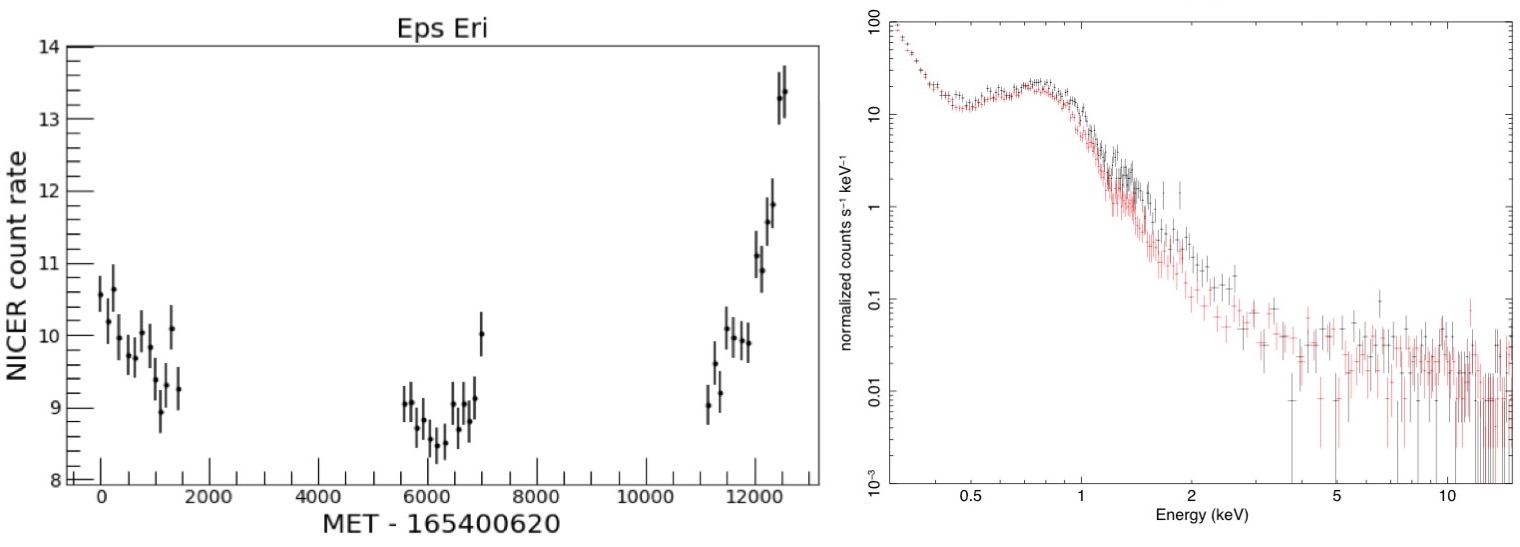NICER / ISS Science Nugget for May 2, 2019NICER evaluates X-ray environment near Sun-like starsNICER has recently engaged with Goddard Space Flight Center's (GSFC) Sellers Exoplanet Environments Collaboration (SEEC). SEEC is an interdisciplinary group that includes astrophysicists, heliophysicists, planetary scientists, and exoplanetary scientists whose goal is to make cross-cutting progress toward understanding the factors that affect life on earth and beyond. SEEC is named after Dr. Piers Sellers, an Earth scientist and astronaut who completed 6 EVAs and 3 Shuttle missions to the ISS. Piers passed away in December 2016. More than 4000 exoplanets have been detected so far by ground and space-based observatories like Kepler and now the Transiting Exoplanet Survey Satellite (TESS), allowing increasingly refined statistical determination of the distribution of physical and orbital properties of exoplanets, and the identification of planets in the habitable zones of their host stars. Planetary habitability is not simply determined by equilibrium temperature due to the planet's distance from its star. Stellar flaring activity plays a critical role in planetary atmospheric survivability and atmospheric chemical evolution. Understanding this activity requires a determination of the frequency and properties of the flaring activity of host stars. Thermal X-ray emission produced by stellar flares is an important diagnostic of this stellar activity. Making use of its large area, spectral passband, and flexible scheduling, NICER will provide 2–5 ks snapshots (e.g. see figure) of 13 Sun-like stars of various ages every 2–3 months in coordination with a collection of radio, IR, optical, and UV observatories within the SEEC collaboration, including long TESS "stares." This broad spectral coverage is crucial for understanding how exoplanet atmospheres respond to intense doses of ionizing radiation — similar to the way the Earth's atmosphere interacts with the space weather produced by the Sun. This has a direct bearing on the viability of life on exoplanets.
NICER
|



